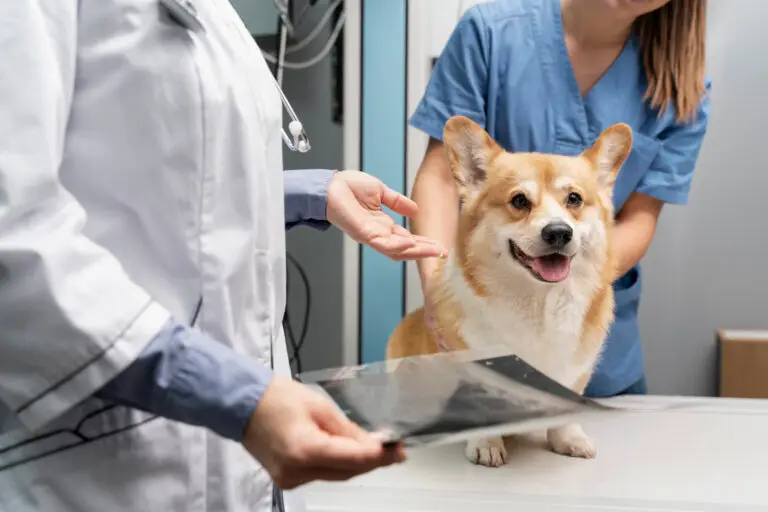Make Presumptive Taxation Simple for Your MSME in 2025
Table of Contents
Introduction
Running a small business is already challenging. Managing taxes shouldn’t add more stress. That’s where Presumptive Taxation comes in.
It helps small businesses, professionals, and transporters file income tax with fewer documents and no need for audits.
Under India’s Income Tax Act, three main sections, 44AD, 44ADA, and 44AE, make it easier for Healthcare MSMEs, traders, and service providers to report income.
You don’t have to maintain full books of accounts. You simply declare a fixed percentage of your turnover or receipts as your income.
Whether you own a small clinic, run a diagnostic lab, supply medical tools, or offer healthcare consulting, Presumptive Taxation can reduce your compliance burden and save you money.
In this guide, we’ll break down each section clearly.
Plus, we’ll give real-world examples to help you understand how it works. So let’s begin by understanding what each section means and how it benefits Healthcare MSMEs.
1. What is Presumptive Taxation and How Does It Help Small Businesses in India?
Presumptive Taxation is a simple way for small businesses to file income tax without going through complex paperwork.
Under this system, you don’t need to maintain detailed accounting records or hire expensive auditors.
Instead of calculating profit from actual income and expenses, you just declare a fixed percentage of your total turnover or receipts as your income.
The government has already decided these percentages under different sections of the Income Tax Act.
Let’s take an example:
If you run a small medical supply store and your yearly turnover is ₹25 lakh, you don’t need to maintain full financial books.
Under Section 44AD, you can simply declare 8% of ₹25 lakh (or 6% if payments are digital) as your taxable income.
This method:
- Saves time
- Reduces compliance headaches
- Avoids the need for audits
- Helps focus on business instead of paperwork
Presumptive Taxation is especially useful for Healthcare MSMEs, small clinics, pharmacies, and service providers who have limited resources and want an easier way to stay tax-compliant.
2. What is Section 44AD, and Who Can File Under It?
Section 44AD is part of the Presumptive Taxation Scheme in India.
It is designed to make tax filing easier for small businesses like local traders, shop owners, manufacturers, and even healthcare suppliers.
Under Section 44AD, you don’t have to maintain full books of accounts.
Instead, you can declare your profit as a percentage of your total turnover.
The Income Tax Department assumes that:
- If you receive most payments in cash, you need to declare 8% of your total turnover as profit.
- If you mostly use digital payments, you can declare only 6% of your turnover as profit.
Now, who can use this scheme?
You are eligible if:
- You are a resident individual, a Hindu Undivided Family (HUF), or a partnership firm (not LLP).
- You are engaged in business (trading, manufacturing, or retail).
- Your annual turnover is up to ₹3 crore, provided 95% or more receipts are digital.
But keep in mind, professionals like doctors and consultants cannot use 44AD.
3. How Is Income Calculated Under Section 44AD for a Small Retail Pharmacy or Clinic?
Section 44AD makes income calculation very simple for small business owners.
If you own a retail pharmacy, a small clinic with a pharmacy license, or supply healthcare equipment, this section helps you save time and effort.
Let’s break it down with a simple example.
Example 1: Pharmacy with Mostly Cash Sales
Let’s say you own a small pharmacy.
Your total turnover for the year is ₹60 lakh.
You collect most payments in cash.
As per Section 44AD rules, you declare 8% of your turnover as income.
Calculation:
₹60,00,000 × 8% = ₹4,80,000
This ₹4.8 lakh becomes your presumptive taxable income. You don’t have to show actual profit or maintain full books of accounts.
Example 2: Clinic or Pharmacy Using Mostly Digital Payments
Now, assume your clinic accepts digital payments like UPI, debit cards, or net banking.
Turnover is still ₹60 lakh, but over 95% of payments are digital.
Here, you can declare 6% of your turnover as profit.
Calculation:
₹60,00,000 × 6% = ₹3,60,000
You will pay tax on ₹3.6 lakh as your presumptive income.
This method is a huge relief for Healthcare MSMEs, especially in Tier 2/3 cities, where maintaining detailed accounting records can be difficult.
It also gives you more clarity on your profits and makes loan applications easier with a clean ITR record.
4. What is Section 44ADA, and How Is It Useful for Professionals Like Doctors, Architects, or Consultants?
Section 44ADA is part of the Presumptive Taxation scheme, made specially for individual professionals.
It is designed to make tax filing simple for people who earn from providing services, not from selling products.
Let’s say you are a doctor running a small clinic, a consultant for medical equipment, or an architect helping design small hospitals.
If your total income from professional services is less than ₹75 lakh in a year, Section 44ADA can save you time and effort.
Who Can Use Section 44ADA?
Here’s a quick list of eligible professionals:
- Doctors (including dentists and medical consultants)
- Architects
- Accountants
- Legal professionals
- Engineers
- Technical consultants
Even small freelancers in these fields can use this section if they don’t cross the ₹75 lakh limit.
How Is Income Calculated?
Under Section 44ADA, the government assumes that 50% of your total receipts is your net income. That means you don’t have to show exact profits, keep track of every small expense, or maintain detailed accounts.
Example:
Let’s say a doctor earns ₹40 lakh in a year through patient fees and small procedures.
As per Section 44ADA, income = ₹40,00,000 × 50% = ₹20,00,000
This ₹20 lakh is considered your profit, and you will pay tax on it.
You do not need to submit actual bills for clinic rent, assistant salaries, or other costs.
However, if your real expenses are higher than 50%, you may choose to go with regular taxation (but then detailed accounting is required).
Why Is It Helpful?
For solo professionals, especially in Tier 2/3 towns, managing GST, expenses, and ledgers can be tough. Section 44ADA reduces the paperwork.
It also helps you file taxes faster, show clean income to lenders, and focus more on your practice or clients instead of financial stress.
This makes it a great option for Healthcare MSMEs offering services like telemedicine, diagnostics, therapy, or consultancy.
5. What is Section 44AE, and Who Should Use It?
Section 44AE is a part of the Presumptive Taxation scheme designed only for small transport business owners.
If you own goods vehicles and use them for business, this section helps you file your taxes without needing to maintain full books of accounts.
Who Can Use Section 44AE?
This section is for any individual, partnership firm, or company that:
- Owns up to 10 goods vehicles (can be light or heavy vehicles)
- Uses them for transporting goods
- Is not involved in hiring/leasing trucks to others, but runs a transport business directly
Whether you have a mini truck, tempo, or heavy truck, this rule applies as long as the total number of vehicles you own doesn’t go over 10 during the year.
How Is Income Calculated?
Under Section 44AE, the income is fixed per vehicle, per month. You don’t have to show actual expenses or income. The government assumes standard profits like this:
- Heavy goods vehicle (over 12,000 kg capacity): ₹1,000 per ton of capacity per month
- Other vehicles (light and medium): ₹7,500 per month per vehicle
Example:
Let’s say you own 3 light trucks.
Income = ₹7,500 × 3 vehicles × 12 months = ₹2,70,000
This ₹2.7 lakh is your presumptive income for the year, regardless of your fuel cost, repairs, or real earnings.
Why Is Section 44AE Useful?
This section helps small fleet operators avoid complicated paperwork.
You don’t have to submit petrol bills, maintenance slips, or toll receipts.
You also don’t need to worry about exact accounting or hiring a CA unless you want to.
It is a simple way to stay compliant and save time.
If you run a transport service for medical equipment or supply oxygen cylinders to Healthcare MSMEs, this section might be very useful for your tax filing in 2025.
6. What Are the Key Benefits of Presumptive Taxation for MSMEs and Professionals?
Presumptive Taxation is a smart and simple way for small businesses and professionals to file their income tax.
It is especially helpful for Healthcare MSMEs, shop owners, transporters, consultants, and doctors who want to avoid the headache of too much paperwork.
1. No Need to Maintain Detailed Books
Normally, businesses must keep ledgers, expense records, and income statements.
But under presumptive taxation (Sections 44AD, 44ADA, and 44AE), this is not required.
You don’t need to track every rupee.
Just declare income as a percentage of your turnover. This saves time and reduces the need for accountants.
2. Lower Compliance Costs
Hiring a full-time accountant or CA for preparing detailed books and financial statements can be costly.
Presumptive taxation avoids that.
You file taxes with basic information, which means fewer fees to professionals and less time spent on bookkeeping.
3. Simplified ITR-4 Form
Presumptive taxpayers can use the ITR-4 form, which is much easier than ITR-3 or others. This form:
- Requires fewer details
- Can be filed quickly online
- It is available on the income tax portal
Even if you’re a doctor, dentist, or pharmacy owner, you can file your taxes without deep accounting knowledge.
4. Faster Tax Return Processing
Because you declare a fixed percentage as income, there’s less back-and-forth with the tax department.
Your return is likely to be processed faster.
Also, in many cases, your chances of getting notices or scrutiny are lower when you file under a government-accepted scheme like presumptive taxation.
5. Helpful for Small and Growing Businesses
If your business is still small or in its early stages, this method gives you breathing room.
You can focus on growing your business instead of spending time sorting paperwork.
For example, if you’re running a dental clinic or a small diagnostic lab in a Tier 2 city, presumptive taxation keeps things smooth and simple.
Final Thought
Presumptive taxation is a great fit for MSMEs and professionals who want to save time, reduce stress, and stay compliant with income tax rules.
It’s built to support India’s small business backbone, including healthcare entrepreneurs, with less paperwork and more peace of mind.
7. Can I Switch Between Presumptive and Regular Taxation Every Year? What Are the Conditions?
This is a very common question for small business owners and professionals.
The short answer is that it depends on which section you’re filing under.
Let’s break it down in simple terms.
If You Are Filing Under – Section 44AD
(For Small Businesses)
Section 44AD is meant for small traders, shopkeepers, clinics, pharmacies, and other businesses (excluding professionals).
- Once you choose presumptive taxation under 44AD, you must continue it for the next 5 years.
- If you leave the scheme and file regular books even for 1 year, then you cannot come back to 44AD for the next 5 years.
- This is called the 5-year lock-in rule.
So, be careful before switching out. If you’re running a healthcare MSME and want flexibility, think long term.
If You Are Filing Under – Section 44ADA
(For Professionals)
Section 44ADA is for doctors, architects, lawyers, or consultants.
- Good news: There is no lock-in period.
- You can switch between 44ADA and regular tax filing every year.
- For example, this year you can file under 44ADA. Next year, if your expenses are high and you want to claim them, you can move to the regular method.
This gives more flexibility to medical professionals, small-town dentists, or healthcare consultants.
If You Are Filing Under – Section 44AE
(For Transporters)
Section 44AE is for transport businesses with goods vehicles.
- This section is less strict than 44AD.
- You can opt in or out each year based on your situation.
- There’s no 5-year lock-in rule here either.
Summary
Section | Type of Business | Can I switch Every Year? | Lock-In Rules |
44AD | Small business/MSMEs | ❌ No | 5-year lock-in if opted out once |
44ADA | Professionals (e.g., doctors) | ✅ Yes | No lock-in |
44AE | Transport businesses | ✅ Yes | No lock-in |
Final Word
If you’re a small business under 44AD, make sure you’re ready for a 5-year commitment before opting in. B
But if you’re a doctor or consultant, 44ADA gives you more freedom and flexibility to switch between schemes depending on your income and expenses each year.
Always speak to your tax advisor if you’re unsure.
8. Which ITR Form Should I Use If I’m Filing Under Presumptive Taxation in 2025?
If you’re filing your taxes under the Presumptive Taxation Scheme, it’s important to choose the correct ITR form.
This helps you avoid errors, delays, and notices from the Income Tax Department. Let’s understand this in very simple language.

Use – ITR-4 Sugam If You’re Opting for Presumptive Tax
Most small businesses and professionals who choose presumptive taxation under Section 44AD, 44ADA, or 44AE should file using ITR-4.
This form is also called “Sugam”, and it’s made for people who:
- Have business income under Section 44AD
- Have professional income under Section 44ADA
- Have income from goods vehicles under Section 44AE
- Have a total income of up to ₹50 lakhs in a financial year
So, if you’re running a small clinic, diagnostic lab, retail pharmacy, or transport business and using presumptive income, ITR-4 is your go-to form.
But Use ITR-3 If You’re Not Opting for the Presumptive Scheme This Year
Let’s say:
- Last year, you filed using 44AD (presumptive).
- But this year, you decided to switch to regular income with full books.
In this case, ITR-4 is not allowed.
You must use ITR-3 because you are now showing actual profit and loss, balance sheet, and all expenses.
Also, professionals or businesses with income above ₹50 lakhs cannot use ITR-4. They too need to use ITR-3.
Example for Clarity
Person Type | Filing Type | ITR Form |
A pharmacy using 44AD | Presumptive | ITR-4 |
A doctor using 44ADA | Presumptive | ITR-4 |
A transporter using 44AE | Presumptive | ITR-4 |
A lab switching to full books | Regular books | ITR-3 |
Any MSME earning > ₹50L | Not eligible for ITR-4 | ITR-3 |
Final Note
If you’re unsure whether to continue with presumptive taxation or switch to regular, it’s always better to consult a tax professional before filing.
Filing the wrong ITR form may lead to rejection or delay in return processing.
So remember ITR-4 Sugam if you’re keeping it simple, ITR-3 if you’re going detailed.
Conclusion: Presumptive Taxation Made Simple for MSMEs and Professionals
Presumptive taxation under Sections 44AD, 44ADA, and 44AE offers a simple way for Healthcare MSMEs, professionals, and transporters to file taxes without the stress of maintaining detailed accounts.
Whether you’re running a small pharmacy, clinic, diagnostic lab, or offering consultancy services, this scheme helps you declare income on a fixed percentage of turnover, reducing both compliance costs and mental load.
If you’re a trader or manufacturer with turnover up to ₹3 crore, Section 44AD is ideal.
For professionals like doctors or architects, 44ADA lets you assume 50% of your income as profit.
And for transporters with goods vehicles, 44AE offers fixed income estimates per vehicle.
With benefits like easy ITR-4 filing, no mandatory books, and faster processing, presumptive taxation is a smart option.
Just remember the conditions like the 5-year lock-in rule for 44AD, and use the right ITR form based on your situation.
For most small businesses and healthcare providers, this scheme is a game-changer.
The Following Video Might be Helpful for You
Also Read,
- The Ultimate Guide: Working Capital Loans for Small Business (MSMEs) in 2025
Understanding the Impact of Payment Terms on Working Capital for Clinics
How Poor Inventory Management Hurts Working Capital in Pharmacies.
Want a Better Business Credit Score? Small Pharmacies Can Now Use UPI & Cards to Build It
Want a Better Credit Score? Use Small Daily Payments to Build Your CBIL (For Clinics & Pharmacies)
Case Study:How a Small Clinic Improved Its Working Capital Management





